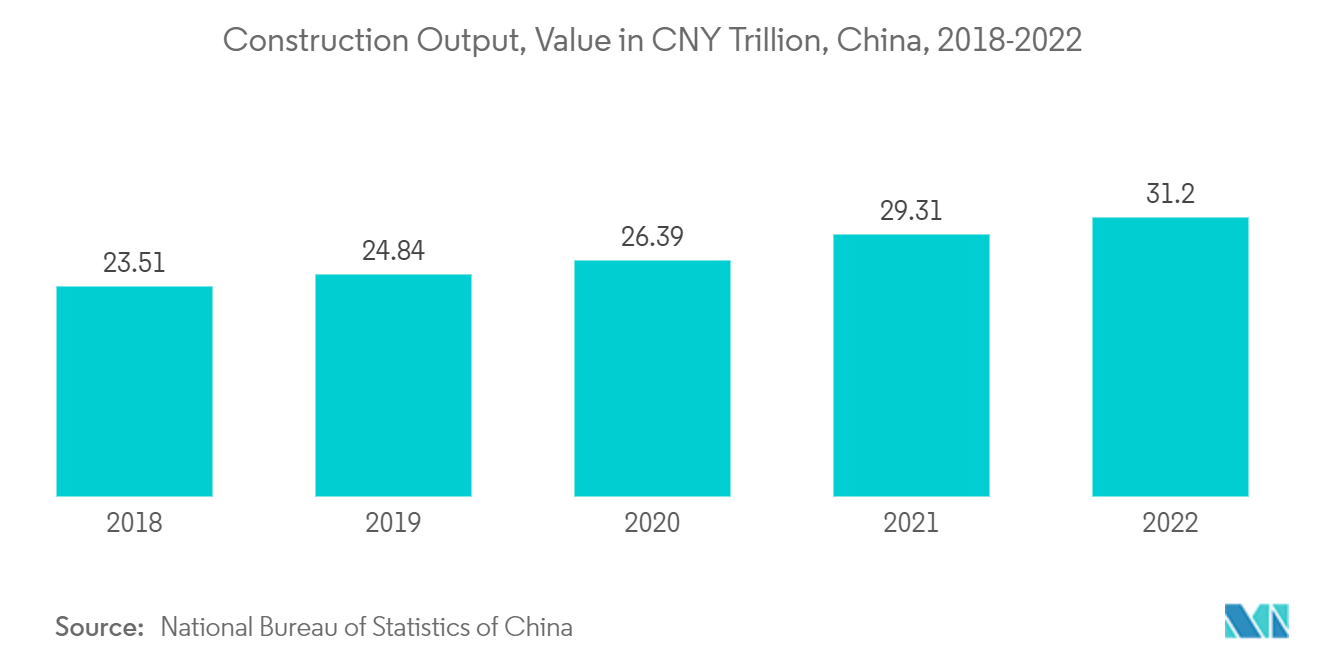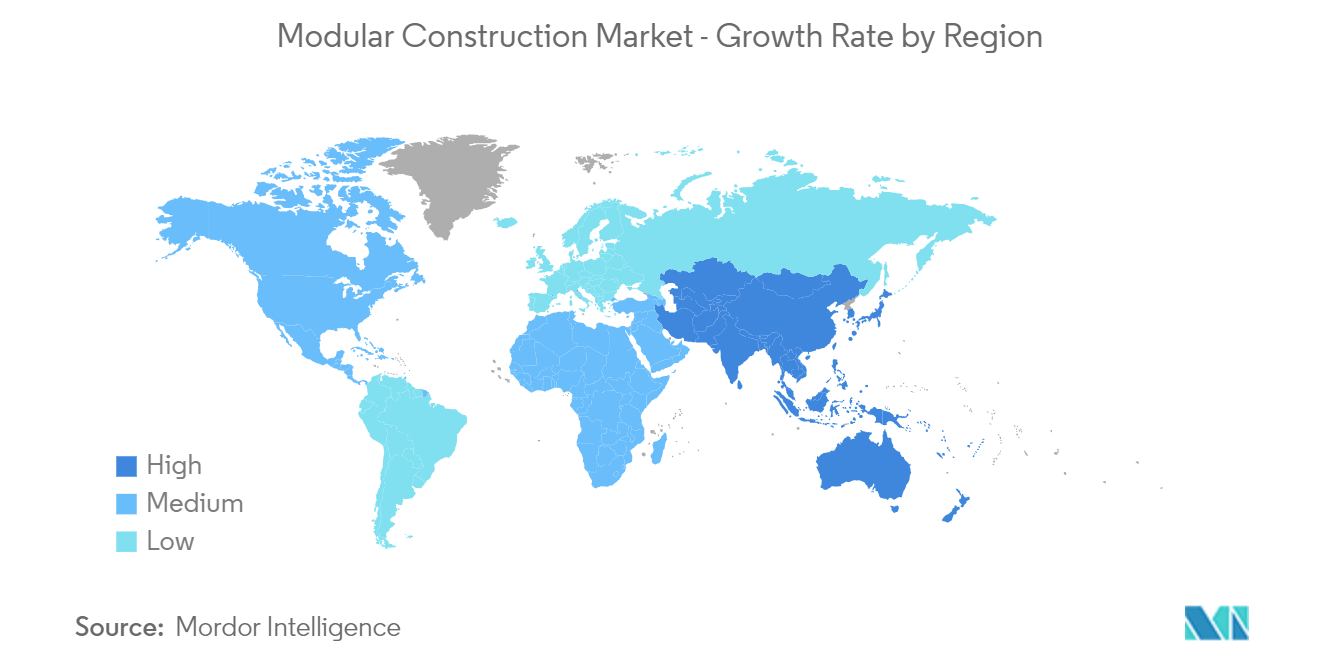Market Trends of Modular Construction Industry
Increasing Demand from the Industrial/Institutional Sector
- The industrial/institutional sector is the largest segment in the modular construction market. Institutional buildings are constructed using the modular construction process in accordance with the International Building Code (IBC) or a version of a code modeled after the IBC and state regulations.
- The increasing demand for modular construction in Asia-Pacific is moving much of the construction process from the building site into factories. "While countries like China, Japan, Singapore, and Australia are increasingly adopting modular buildings to meet labor and housing shortages, increase in industrialization, rising urbanized population, rising demand for eco-friendly and sustainable construction and government support."
- Government initiatives to reduce waste and promote green construction and building techniques are driving the demand for modular construction. For example, Singapore has mandated elements of prefabricated, pre-finished, and volumetric construction (PPVC) for all the projects on the government's land. This is backed by subsidies for companies that participate with the aim of increasing and standardizing modern methods of construction (MMC) in the country, thereby increasing the demand for off-site construction.
- According to the National Bureau of Statistics of China, the country's construction output peaked in 2022 at about CNY 31.20 (~USD 4.61 trillion). Thereby supporting the market demand.
- According to EU Industrial R&D Investment Scoreboard, Europe's industrial sector is back on track in research and development investments with an increase of 8.9% in 2021 compared to the -2.2 % pandemic-related dip in 2020.
- Globally, the private sector R&D investment in industrial construction grew strongly beyond pre-pandemic levels by 14.8% in 2021 (compared to 2020).
- According to the American Institute of Architects, in the United States, spending in education space, which declined by an estimated -6.6% in 2021, is expected to rise by 2.7% in 2022. Spending in health facilities rose by an estimated 1.2% in 2021, and it is expected to rise by 2.4% in 2022.
- According to the European Investment Bank Group, the bank provided EUR 99 million (~USD 105.48 million) loan to Hemsö Fastighets AB to create more energy-efficient social infrastructure in Sweden and Finland. Nine buildings for social services will be built, including nursing homes, a medical facility, preschools, and school services.
- Therefore, the above factors are expected to have a significant impact on the market in the coming years.

Asia-Pacific Region to Dominate the Market
- The Asia-Pacific region stands to be the largest and fastest-growing market for the construction industry. Factors, such as expansion in the residential and commercial construction sector, will drive market growth in the region.
- Further, rising investments in infrastructural construction projects in the private and public sectors in developing countries, such as India and China, have proliferated the growth of the Asia-Pacific modular construction market.
- The rising household income levels, combined with the population migrating from rural to urban areas, are expected to continue to drive the demand in the residential construction sector in the region. The increased focus on affordable housing by both the public and private sectors is driving the growth in the residential construction sector.
- Non-residential infrastructure is expected to grow considerably. The aging population in the country is creating a demand for the construction of healthcare facilities and new hospitals. The structural changes in the Chinese economy over the past few years, with the service sector taking a larger share of the total GDP, are giving rise to the construction of huge commercial and office spaces.
- China has the largest construction market in the world, encompassing 20% of all construction investments globally. China is expected to spend nearly USD 13 trillion on buildings by 2030, creating a positive market outlook for the modular construction market.
- India plans to spend USD 1.4 trillion on infrastructure through the 'National Infrastructure Pipeline' in the next five years, as reported in 2022. In FY21, infrastructure activities accounted for a 13% share of the total FDI inflows of USD 81.72 billion.
- According to Singapore's Central Bank, the country is planning on investing over USD 2.7 billion in infrastructure and housing projects. The government announced that the public sector will be issuing up to SGD 35 billion (~USD25.3 billion) of green bonds to finance sustainable infrastructure projects by 2030.
- Thus, the factors mentioned above are expected to boost the demand for the modular construction market in the region in the coming years.

